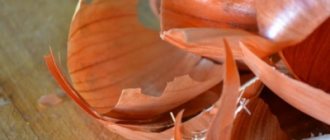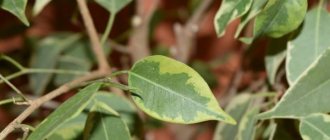Ficus is a fairly popular indoor plant. Most often you can find Ficus Benjamin in homes and offices. It does not require special growing conditions, which is why it is so loved. But in order to maintain its decorative qualities, you need to provide it with adequate nutrition. Properly selected fertilizers for Ficus Benjamin and timely fertilizing will help preserve the beauty of the plant.
Conditions for proper development
Ficus benjamina feels good in a spacious pot. This does not mean that you need to immediately plant it in a flowerpot, you just need a pot where the plant will freely take root. At the same time, the ficus does not like frequent transplants and changes of place of residence; for this it needs constancy. He reacts to all changes with protest - he sheds his leaves.
The plant needs moderate watering, always with warm, settled water. Excess moisture and low temperatures lead to rotting of the roots. Therefore, excess water that has flowed into the pan must be drained immediately.
The shower for Ficus Benjamin should also be warm, and after that the leaves should be wiped with a damp cloth. Otherwise, dusty stains will remain on the leaves, and the plant does not like this.
Temperature
The Benjamin tree is a heat-loving specimen. But each species has its own needs. Thus, bushes with variegated leaves grow well at 24 degrees. Some varieties of ficus prefer lower temperatures - about 18-20 degrees. Other plants reach their full potential at temperatures of at least 30 degrees and can withstand higher temperatures. If your flower is on the terrace or somewhere outside, be sure to return it to the house if the temperature drops below 16 degrees at night.
In winter and autumn, the plant needs more careful care. Ficus Benjamin should be kept in a room with a temperature of about 17-20 degrees. If the room is cold, take care of the plant by turning on the radiator. If you don’t have heaters, wrap the flowerpots and move them to a place where they won’t be threatened by drafts and sudden temperature changes.
Nutrition needed by ficus and signs of its deficiency
To know exactly what fertilizers are needed for Ficus Benjamin, you need to understand what the ficus eats.
For the proper development of a plant, it needs various macro- and microelements. There are 13 of them in total, nitrogen is considered the main one. It is nitrogen that forms the green mass and is responsible for the rich color of the leaves. Thanks to it, photosynthetic processes proceed normally.
Ficus also needs:
- In phosphorus, thanks to which the root system of the plant grows and develops and resistance to diseases increases.
- Potassium, thanks to which the plant tolerates short-term droughts well.
- Calcium, which improves the metabolic processes of the flower.
These are the main elements; additional elements include magnesium, manganese, sulfur, iron, zinc, copper, molybdenum, cobalt, and boron.
When the soil begins to lack certain nutrients, the flower starves. This can be seen by the following signs:
- Growth slows down and then stops completely.
- The stems stretch and become thin.
- The leaves become pale and yellow spots appear.
- The elasticity of the leaves is lost, they can dry out and die.
- The plant's immune system begins to work poorly, so susceptibility to disease increases.
- Low resistance to pests.
Feeding Ficus Benjamin should be done regularly until the above signs begin to appear.
The ficus will also react to excessive fertilization: it will shed its leaves and the soil will become covered with a white coating.
Reproduction
In fact, ficus benjamina can be propagated in various ways: using seeds and vegetatively. But in practice, the plant is most often divided by cuttings after spring pruning. Although you can cut and plant cuttings all year round, it’s just in the spring that they take root and grow much faster.
How to prepare a cutting? Cut off the top of the ficus using sharp scissors or a knife. The length of the cutting should be approximately 10-12 cm. Do not touch the upper leaves on it, but you can remove a couple of the lower ones. While the cut is fresh and juice is released from it, the cutting should be placed in the ground or in water so that it takes root. And when the root system of the plant gets stronger, it can be transplanted into the ground. You need to prepare the soil in the same way as for replanting.
How to properly feed ficus benjamina
Fertilizers are needed for the active growth and development of the plant. This is especially important during the growing season.
In summer, the flower needs to be fed with nitrogen-containing fertilizer. After this, the growth of deciduous mass will begin. This feeding is also suitable for rehabilitating a damaged plant.
Since this flower is quite tall (at home it grows up to 3 meters), fertilizers for Ficus Benjamin should be varied. You can purchase ready-made fertilizers in specialized stores or prepare them yourself at home.
Before feeding, you need to make sure that the ficus does not become crowded in the pot. As usual, it is replanted once every 4 years, when the roots completely entangle the soil in the pot. It is best to replant ficus in spring or autumn when it is warm.
It is not necessary to prepare the soil for replanting yourself; it is easier to purchase a special soil mixture for ficuses in the store. In special soil the plant will take root faster.
Fertilizers for Ficus Benjamin will depend on several factors: soil, age of the plant, season. For example, if the substrate does not contain soil, it means that it contains absolutely no nutrients, and in this case, fertilizing is carried out all year round. Conventional soil mixtures are periodically fed with organic or mineral fertilizers. As a rule, fertilizing is carried out in the summer, every two weeks.
Watering quantity
You need to water the ficus carefully, distributing the water over the entire surface of the substrate.
The next day after watering, the substrate should be carefully loosened, trying not to touch the roots, this promotes better aeration of the substrate
The amount of watering depends on the size of the pot. If the ficus is floor-mounted, then the volume of water can be several liters. Most of the ficus's suction roots are at the bottom of the pot, so the volume of water should be sufficient to wet these roots.
If for some reason the ficus has dried out, then the pot should be immersed in a container of water, removed after the bubbles stop rising and the excess water should be allowed to drain. If this procedure does not help revive the ficus, then perform anti-aging pruning.
If water quickly flows through the drainage hole after watering, this signals that it is time to replant the ficus.
How often to feed ficus
Fertilizing ficus benjamina at home is not done as often as other house flowers. But at the same time, the amount of nutrients should be sufficient for proper nutrition.
The larger the plant's canopy, the more nutrients it will need. In about two months, the ficus completely depletes the soil.
Intensive feeding will be required during the active growth of the plant - in the spring and summer.
The last time fertilizing ficus at home is carried out at the end of September. When cold weather sets in, the ficus goes into a dormant state and all processes slow down. The need for nutrition is reduced; there is no need to fertilize it during this period.
If the room where the ficus is grown is warm and light enough, fertilizing can be continued, but the rate and frequency must be reduced.
Features of the plant
If under natural conditions Benjamin's ficus grows quite quickly and can reach the height of 20-meter birch trees, then their domesticated relatives are characterized by much less intense growth. Thus, over a 10-year period of development, indoor specimens can grow only one and a half, maximum two meters. This evergreen tree or large shrub has an invasive root system, that is, the roots, in addition to growing deep, tend to actively develop the soil surface.
In areas with a tropical climate, you can observe a bizarre picture of arrays of aerial roots under the spreading crowns of old trees. Benjamin's homemade ficus plants also have a strong root system, and in cases where soil is not added to the flowerpot, the roots will certainly appear on its surface, although without the formation of aerial roots. But only wild plants are capable of blooming and bearing fruit.
What kind of fertilizers are there for ficus benjamina?
Based on their origin, fertilizers are divided into two main types: mineral and organic.
Mineral fertilizers are inorganic compounds that are produced industrially. They contain a very high concentration of useful substances, which means they will give a positive effect faster.
Organic fertilizers are the decomposing remains of plant and animal organisms. They nourish plants well, improve soil, and improve the functioning of beneficial microorganisms, but their action is slower.
The best fertilizer for Ficus Benjamin is alternating mineral and organic fertilizers. This approach will provide the flower with the necessary nutrition for full development.
Mineral fertilizers
Today there are quite a few different fertilizers specifically for Ficus Benjamin. They contain minerals in the right ratio.
All drugs differ in the form of release:
- Dry - in powder, tablets, granules. Solutions are prepared from them or placed in the soil. In the latter case, they gradually dissolve when watered.
- Liquid - they are used to carry out root and foliar treatment of plants. They are distinguished by their fast action.
- Sticks - they are loved for their prolonged action (up to several months). Place next to a flower in a pot. Allows you to save time on caring for the plant.
The most popular fertilizers for ficus that are easy to use at home
- Humus of animal origin is a natural source of nitrogen. It is this fertilizer that is used for ficus benjamina to thicken the leaves. The most beneficial substances are found in bird droppings. Bird droppings products are even superior to manure. They act very quickly, almost like mineral fertilizers. It must be remembered that bird droppings are used only in the form of a solution. Ficus Benjamin can be fed with humus from the manure of cattle, horses, pigs, etc. It is also used in the form of a solution.
- Plant humus - in this case, plant debris decomposes. This fertilizer has many essential microelements, and a solution is also made from it.
- Nettle. Nettle fertilizer contains elements such as nitrogen, potassium and magnesium. It is used to strengthen the root system, accelerate plant development, and improve soil condition. Leaves and stems must be prepared in advance, before the seeds appear on the nettles. Fill half a plastic bottle with nettles, add water and leave to ferment for 2 weeks. The result is a dark green liquid, which is diluted with water for use. Ficus should be watered with a solution in a ratio of 1:10, and sprayed with a solution of 1:20. The proportions should not be violated, as you can burn the leaves and roots.
- Wood ash. It contains quite a lot of different elements, including potassium and phosphorus. An infusion is made from ficus ash: 1 tsp. ash is poured into 1 liter of boiling water and left for 7 days. This infusion is used to water the flower. Also, to protect the plant from pests, you can dust the leaves with ash.
- Succinic acid. If Benjamin's ficus sheds its leaves, fertilizer is usually not required for it; this is a reaction of the flower to external stimuli, such as frequent replanting, change of residence or improper care. If there have been no changes in the life of the flower, you can feed it with a crystalline colorless substance - succinic acid. It promotes flower growth, increases its vitality, and improves soil microflora. To fertilize, you first need to prepare a concentrate: dissolve 1 g of succinic acid in 1 liter of water. For spraying leaves, this concentrate is diluted with water in a ratio of 1:1, for root watering - in a ratio of 1:4. It is recommended to feed ficus with succinic acid once a year; the finished concentrated liquid is stored for no more than 3 days.
Thus, fertilizers for Ficus Benjamin at home can be completely different, the main thing is to accurately observe the proportions when using them.
Folk recipes
If it is not possible to buy complex fertilizers for indoor flowers in the store or their composition does not inspire confidence, you can resort to folk recipes. They are available and their effectiveness has been tested by time and the experience of many gardeners.
- Sugar. The product is more popular among other natural fertilizers because it contains glucose. This substance is a source of energy for all life processes of a flower, as well as a good building material for the formation of complex organic molecules. When using, sugar can be poured onto the surface and pour water on top. In this case, use one teaspoon of the product per pot. For efficiency, it is advisable to make a liquid solution using 1 tablespoon of granulated sugar for every liter of water. It is important to remember that excessive amounts of sugar can provoke the development of various root rots and molds in the soil.
- Yeast. At the time of active growth of the above-ground part, the ficus will not be harmed by fertilizing based on yeast, which activates the work of soil organisms in the flower pot. Making yeast fertilizer is very easy and simple. This fertilizer is cheap, you can buy it in any store, and the preparation process will take a few minutes. To make a nutrient mixture, simply dilute 1 tablespoon of dry concentrate in 10 liters of water. When using raw yeast, you should dissolve 100 grams of raw material in 10 liters of warm water and leave in a warm place for about a day.
When preparing a yeast solution, it is important to maintain the exact concentration of the solution and dosage for the ficus.
- Tea. It is not recommended to use tea in its pure form for fertilizer due to its strong effect. You need to use tea leaves after drinking. Tea should be black, without flavoring additives. It is important not to overdo it with such fertilizing, so that an excessive amount of tea solution can cause the formation of mold and the appearance of midges.
- Coffee. You can use coffee grounds as a fertilizer for ficus. The beneficial substances contained in it will help improve the condition of the plant, improve the structure of the soil, and provide oxygen access to the roots of the tree. To do this, dry it and mix it with soil. The product should not remain on the surface; it should be sprinkled with soil to prevent the appearance of midges. When using this product, be aware that fresh coffee contains a large amount of nitrogen, which can burn the roots of the plant.
- Banana peels. Ficus responds well to banana peels, which contain a significant amount of nutrients. Place the crushed banana peel in a liter container and pour boiling water. Let it sit for a day. Then filter the resulting composition and water it once every two months. Fruit skins can also be added to the ground. By rotting in the soil, they enrich the flower with microelements, which has a positive effect on the growth of green mass.
- Ash. This homemade fertilizer has many valuable mineral elements, phosphorus and potassium of which are vital for ficus. The ash needs to be poured into the soil, or you can make a liquid fertilizer. To do this, take one tablespoon of ash and pour a liter of boiling water. The resulting composition must be left for a week, stirring every day. After time, use as directed, watering under the roots and spraying the leaves of the flower to effectively combat diseases and insects.
- Nettle infusion. To make fertilizing you need to take 50 grams of fresh or 10 grams of dry nettle, and leave it for two weeks in a closed container in 0.5 liters of water. Before use, strain the infusion and dilute with 5 liters of water. It is better to use this bait at the end of active growth to restore the soil.
Advice! You can achieve excellent results using any of these products. It is important to maintain certain proportions and add natural substances at the correct intensity.
Root feeding
Root feeding is watering the plant with nutrient solutions and is the most common method. But in order not to harm the plant, this procedure must be carried out wisely. It will benefit the flower if you adhere to the following rules:
- Read the manufacturer's instructions and follow them exactly. The dosage can be adjusted according to the appearance of the ficus.
- Sick plants do not need to be fed - in this state they do not absorb nutrients. The flower must first be treated with fungicides and wait until it has fully recovered.
- It is not recommended to feed the ficus immediately after transplantation; you need to wait 20-30 days for the plant to adapt and restore damaged roots.
- To prevent burns to the ficus root system, all fertilizing is applied only to moist soil.
Fertilizers for root feeding can be different: both dry and liquid. It is important that the composition is evenly distributed throughout the pot so that all roots receive nutrition.
Propagation by cuttings
Spring (before early summer) is considered a suitable time for reproduction. This is a period of increased formation of roots and leaves. The shoots are cut off not only from the top of the plant, but also from the side branches. Ficus must be an adult. The stems and leaves are cut off from it.
How to plant ficus benjamina using cuttings? The cut branches are placed in a container of water and placed on a windowsill with good lighting. The water is periodically changed to clean. To avoid rotting, add aspirin or charcoal. Leaves should not fall into the water. In about a month and a half, the shoot will give roots.
Another way to plant a cutting is to place it not in water, but in wet sand. Cut a twig from an adult plant, wash it to remove the milky juice and dry it a little. Place in a container with wet sand. After the roots appear, the seedling can be placed in a pot of soil. Perlite is also used instead of sand.
How to plant Ficus Benjamin using a shoot without roots directly into a container? To do this, you must first process the cut on the cutting, and then create optimal conditions for the development of the plant: lighting, humidity and temperature.
Foliar feeding
Ficus plants also love foliar feeding. Through the leaves, nutrients are absorbed faster by plants. Often, foliar treatment is used in emergency cases when the roots cannot take nutrition from the soil. This procedure works very quickly, and the result is visible immediately. But solutions for spraying leaves are very weak, so they cannot completely replace the main feeding.
To maximize the effect of the treatment, it is important to carry it out correctly. The leaves need to be sprayed with a spray bottle, always on both sides. At the bottom of the leaf there are more stomata, through which the fertilizer will be absorbed.
It is very important to prepare the solution for treatment correctly, that is, not to exceed the recommended dosage. Fertilizer can burn the leaves, then the ficus will get sick and die.











